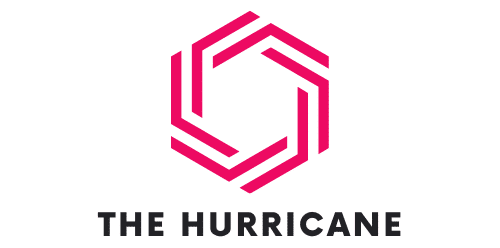What Are the Most Effective Recovery Protocols for Reducing DOMS in Strongman Competitors?

Strongman competitions are grueling events that test the limits of strength and endurance. These athletes push their bodies to the extreme, often resulting in Delayed Onset Muscle Soreness (DOMS). This phenomenon can significantly hinder an athlete’s performance and recovery time. To address this, we’ll review various recovery protocols demonstrated to be effective in reducing DOMS in strongman competitors. The protocols are varied, ranging from sleep optimization and resistance training to the timing of workouts throughout the day and week. This analysis will be beneficial not just for strongman competitors, but for anyone seeking to enhance their fitness and minimize post-exercise discomfort.
Sleep Matters
The importance of sleep cannot be overstated in the world of athletics. It is in this period of rest that our bodies get to work repairing and rebuilding muscle tissues. Therefore, sleep is an essential part of the recovery process.
A voir aussi : What’s the Efficacy of Topical Cooling Gels in Managing Muscle Soreness Post-Competition?
As athletes, you know that the quality of your sleep can impact your performance. Multiple studies have shown a direct correlation between sleep quantity and quality, and athletic performance. Best practices for optimizing sleep include maintaining a regular sleep schedule, creating an environment conducive to sleep, and avoiding stimulants, such as caffeine and electronic screens, close to bedtime.
It’s also important to consider the timing of your sleep in relation to your training schedule. Research suggests that muscles recover more effectively when sleep follows exercise. Therefore, timing your workouts to allow for immediate rest and recuperation can have a significant impact on reducing DOMS.
En parallèle : What’s the Role of Mindfulness in Enhancing Team Dynamics in Professional Basketball?
Resistance Training: A Powerful Tool
Resistance training is often overlooked in discussions about recovery, but it should not be underestimated. It’s a powerful method for preparing your muscles to withstand the demands of intense exercise, and could potentially mitigate the effects of DOMS.
To best utilize resistance training as part of your recovery protocol, you should consider incorporating it into your regular workout regime. This could involve exercises such as squats, deadlifts, and bench presses. You’ll also want to ensure you’re striking a balance between resistance and volume – too much resistance can strain the muscles, while too little may not provide sufficient stimulus for adaptation.
Timing is Everything
When it comes to effective recovery protocols, timing is everything. The body’s physiological responses to exercise fluctuate throughout the day and week, and understanding these patterns can be critical to optimizing recovery and reducing DOMS.
One key aspect to consider is the timing of your workouts. Working out at the same time each day can help your body adapt and prepare for your training sessions. Similarly, aim to keep your workout duration consistent throughout the week as sudden spikes in training volume can exacerbate DOMS.
Post-Exercise Strategies
Post-exercise strategies are an integral part of any recovery protocol. They include nutrition, supplementation, and active recovery techniques.
Adequate protein intake is crucial after a strenuous workout. Consuming a protein-rich meal or shake within an hour of your workout can enhance muscle protein synthesis and recovery. Additionally, certain supplements, such as creatine and BCAAs, have been shown to aid recovery and reduce DOMS.
Active recovery techniques, such as light aerobic exercise or stretching, can also be beneficial. They increase blood flow to the muscles, which can help remove waste products, reduce muscle stiffness, and enhance recovery.
The Power of Rest Days
Finally, let’s not forget the power of rest days. They provide your body with a chance to repair, rebuild, and strengthen itself after the physical demands of training.
As tempting as it may be, avoid the trap of excessive training without adequate rest. Overtraining can lead to a decline in performance and increase your susceptibility to DOMS and injuries. Plan your training schedule to include at least one rest day per week, and use this time to engage in light activities, such as walking or gentle yoga, which can aid muscle recovery and reduce stiffness.
Remember, your training is only as effective as your recovery. Understanding and implementing these recovery protocols can significantly reduce DOMS, enhance your performance, and ultimately, make you a stronger athlete.
The Science of Foam Rolling and Massage
Undeniably, the use of foam rolling and massage for recovery has been steadily gaining popularity among athletes. Interestingly, a systematic review and meta-analysis of multiple scientific studies suggest that these methods can be effective in reducing DOMS in strongman competitors.
Foam rolling, also known as self-myofascial release, involves the use of a foam roller or a similar tool to apply pressure to specific muscle groups. This technique has been shown to increase blood flow to the target areas, relieve muscle tension, and enhance muscle recovery. Such benefits are vital in reducing the prevalence and severity of DOMS.
Similarly, professional massage can help to alleviate muscle soreness and expedite recovery. It works by promoting better blood circulation, which in turn aids in the quick delivery of nutrients to the muscles for repair and growth. This improves not only muscle function but also the overall body composition.
However, the effectiveness of foam rolling and massage can be influenced by factors such as the timing, duration, and technique applied. For instance, it’s advisable to engage in foam rolling or massage immediately after a workout for optimal results. Likewise, it would be best if you aim to spend at least 10-20 minutes on each session.
The Role of Nutrition in Recovery
A well-balanced diet plays an irreplaceable role in athletic performance, recovery, and overall health. In this context, it’s crucial for strongman competitors to focus on their post-workout nutrition.
Protein is a vital nutrient for muscle repair and growth. Therefore, consuming a protein-rich meal or shake within an hour of your workout can enhance muscle protein synthesis and recovery. This strategy can help to reduce DOMS and support the development of lean muscle mass.
Carbohydrates also play a significant role in recovery. After strength training, the body’s glycogen stores are depleted. Consuming carbs after workouts can replenish these stores, providing the energy needed for muscle recovery.
Hydration is another critical aspect. Water helps in maintaining blood volume, which is necessary for nutrient transport to the muscles. Therefore, staying hydrated before, during, and after workouts can significantly aid recovery.
In addition to a well-rounded diet, certain supplements like creatine and BCAAs have been shown to aid recovery and reduce DOMS. However, it’s essential to consult with a healthcare professional before starting any supplementation regimen.
Conclusion
To sum up, managing DOMS in strongman competitions requires a comprehensive approach, encompassing various recovery protocols including proper sleep, resistance training, timing of workouts, post-exercise strategies, and the inclusion of rest days. Techniques like foam rolling and professional massage can also aid in alleviating muscle soreness, while a balanced nutrition strategy plays an essential role in supporting muscle recovery and reducing DOMS.
Through the effective implementation of these protocols, strongman competitors can minimise the impact of DOMS, improve their athletic performance, and ultimately, gain an edge in their sport. Remember, success in strength and conditioning largely hinges on listening to your body and allowing it to recover properly. This will ensure not only better performance but also long-term health and well-being.
